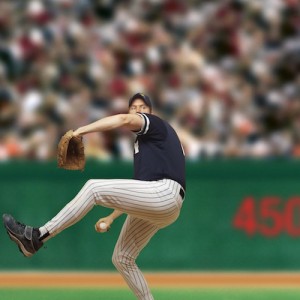 The rotator cuff is a group of four tendons and muscles – supraspinatus, infraspinatus, teres minor and subscapularis. These muscles not only provide power to the shoulder, but also stabilize the shoulder joint, keeping the head of the humerus (upper arm bone) in place against the shoulder blade. Rotator cuff injury is a tear that occurs to one or more of these four tendons or muscles.
The rotator cuff is a group of four tendons and muscles – supraspinatus, infraspinatus, teres minor and subscapularis. These muscles not only provide power to the shoulder, but also stabilize the shoulder joint, keeping the head of the humerus (upper arm bone) in place against the shoulder blade. Rotator cuff injury is a tear that occurs to one or more of these four tendons or muscles.
What are the Causes and Symptoms of Rotator Cuff Injuries?
The two main causes of a rotator cuff injury are acute tears, caused by trauma such as a fall, and chronic tears which are caused by degeneration of the tendon over time. Acute tears are more noticeable because they result in immediate pain and you may experience a snapping sensation or weakness of the arm. You may have developed a chronic tear if you notice some or all of these symptoms: pain while working, lifting, or reaching over your head, pain when sleeping on the affected shoulder, or a weakness in your arm. Both chronic and acute tears can worsen if not treated properly.
How do I Prevent a Rotator Cuff Injury?
One of the best ways to avoid rotator cuff injury is through adequate conditioning before putting strain on your shoulders with vigorous activities of any kind. Warming up is an essential routine before participating in any sporting activity. Stretching and strengthening exercises are very important when it comes to prevention of a rotator cuff injury.
Stretching and Strengthening Exercises
To help avoid injury to your shoulder muscles, try the following exercises. While conducting these exercises, take care to proceed gently and slowly.
* Stand upright, clasp your hands behind your back, and then keep your arms straight while you slowly lift them upwards until you feel resistance. Hold this position for 15 to 20 seconds and repeat it 3 to 4 times.
* Stand with your arm out in front of you with your forearm pointing upwards at right angle (90°). Place a stick or pole in your hand and let it fall behind your elbow. Pull the bottom of the stick forward with your other hand. Hold this stretch for 15 to 20 seconds, and then repeat it 3 to 4 times.
* Lie on your stomach on a table, keeping your left arm at shoulder level with your elbow bent at right angle, slowly raise your left hand to level with your shoulder. Lower your hand slowly and repeat it with your right arm.
* Lie on your right side with a rolled-up towel under your right armpit and stretch your right arm above your head. Your left arm should be at your side with your elbow bent at 90°. Roll your left shoulder out while raising the left forearm to level with your shoulder and then lower the arm slowly (like the backhand swing in tennis)
* Lie on your right side and keep your left arm along the upper side of your body with the right elbow bent at right angle. Let the right forearm rest on the table. Roll your right shoulder in while raising your right forearm up to your chest and then lower it slowly (like the forehand swing in tennis)
* Stand upright and move your right arm halfway between the front and the side of your body, thumb down. Raise your right arm to 45° angle. (the way you empty a can). Make sure not to lift beyond the point of discomfort or pain. Slowly lower your right arm and repeat the exercise with the left arm.
Find OSS on Facebook and follow on Twitter to keep up to date on new articles and news.

